#Rollei Twin Lens Reflex Camera
Photo

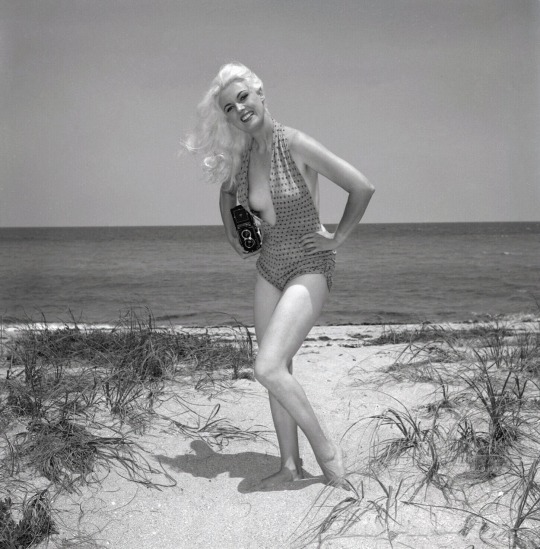
Bunny by Bunny
Bunny Yeager Self-Portrait
Bunny Yeager with Her Trusty Rollei Twin Lens Reflex Camera
(Literally by Her Side)
c.1960's
#Bunny Yeager#Self-Portrait#Pin-Up#Rollei Twin Lens Reflex#Rollei Twin Lens Reflex Camera#Black and White Photography#1960's
78 notes
·
View notes
Photo

Bunny Yeager w/ Models Judi Jones and Charlene Mathies. (and her Rollei Twin Lens Reflex Camera) Biscayne Bay - Miami - c.1960’s
61 notes
·
View notes
Text
It’s a kinda magic
It’s a kinda magic: the one where I explain how I come to have another camera in my stable #believeinfilm and it’s OK, John @TEMLIGHTIMAGES has confirmed that this isn’t GAS
Or a Rollei Magic to be accurate.
The Magic, as I shall hereafter call it, is a medium format, twin-lens reflex (TLR) camera manufactured by German company Franke & Heidecke. It was Rollei’s answer to the demand for a TLR with an automated exposure control. The camera uses 120 roll film so there are no issues finding film. As is to be expected, twelve 6x6cm square images can be captured for each…

View On WordPress
0 notes
Text
Ricohflex Dia: Four months in
Ricohflex Dia: Four months in
Union Station, Portland OR, 31 July 2022. Ricohflex Dia/Ilford XP2
Back in May I acquired my Ricohflex Dia (or Diacord) twin-lens reflex (TLR) 120 camera. I had a few medium format cameras before this, but none of them were particularly great. I really wanted a half-way decent 120 option, so I set my sights on the Diacord series from Ricoh. The offerings from Rollei, Yashica, and Minolta seem to…
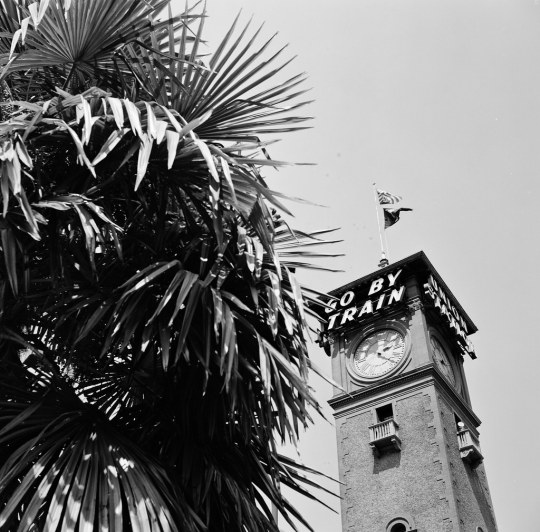
View On WordPress
1 note
·
View note
Text
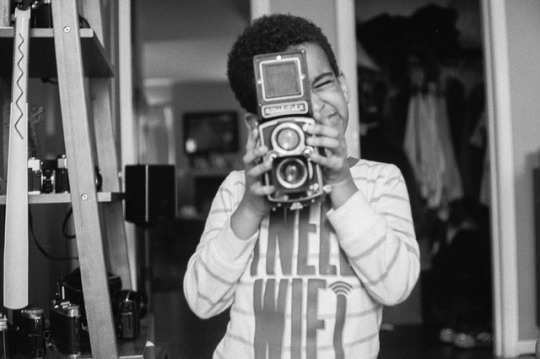
What’s this thing do?
#rollei#eolleiflex#rolleiflex mx evs#film camera#tlr#tlr camera#twin lens reflex#filmexplosion.blogspot.com#film photography channel#analogue camera#b&w#black and white#kids#photography#120 film#tri-x#asa 400 film#black and white film#kids with cameras
3 notes
·
View notes
Text
Kodak Reflex Camera

Kodak Reflex Camera
Twin lens reflex with externally gear-coupled lenses.
6×6cm images on 620film
Kodak Anastar 80mm F3.5 in Flash Kodamatic T, B, 1/2 to 1/200
1946―1949 Eastman Kodak Co. Rochestar N.Y
Kodak Reflex has a 3-elements lens and a gear focus. Therefore, it was sold at a low price.
However, the result of the shooting is excellent, and it is comparable to high-end TLRs such as Rollei.
3 notes
·
View notes
Photo

The Rolleicord
Medium-format twin lens reflex camera
Franke + Heidecke (Rollei) 1933-1976
0 notes
Photo

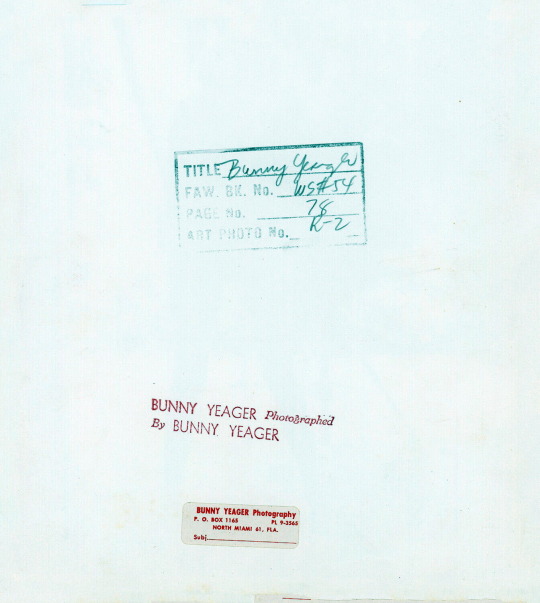
Bunny by Bunny
Taken with Her Rollei Twin Lens Reflex Camera
in Her Miami Beach Backyard
Bunny Yeager
c.1960's
#Bunny Yeager#Pin-Up#Self Portrait#Bikini#Bunny by Bunny#1960's#Black and White Photography#Photography History
146 notes
·
View notes
Photo

Today a treasure trove of photographic equipment was brought into the store for recycling, but out of all the cameras this one really stood out - the #Rolleiflex T Model 1, manufactured by Franke & Heidecke between 1958 and 1961. A #mediumformat (120mm film) Twin Lens Reflex camera with 75mm #Zeiss lenses, this was very popular due to its affordability, reliability, superior #optics and exceptional build quality. Never mind creating works of art with this #camera, it’s a piece of art unto itself! To find out more about our services please visit www.computation.ca, contact us at [email protected] or give us a call at 416-913-3443. #computation #toronto #computationrecycling #electronicsrecycling #computerrecycling #ewasterecycling #computerrepair #laptoprepair #vintagecamera #classiccamera #filmcamera #TLR #frankeandheidecke #carlzeiss #Rollei #RolleiflexT #dontdespairwerepair #wastereductionweek (at Computation Ltd.) https://www.instagram.com/p/CGDqZUbhzVg/?igshid=13so8jlvv3j6i
#rolleiflex#mediumformat#zeiss#optics#camera#computation#toronto#computationrecycling#electronicsrecycling#computerrecycling#ewasterecycling#computerrepair#laptoprepair#vintagecamera#classiccamera#filmcamera#tlr#frankeandheidecke#carlzeiss#rollei#rolleiflext#dontdespairwerepair#wastereductionweek
0 notes
Photo
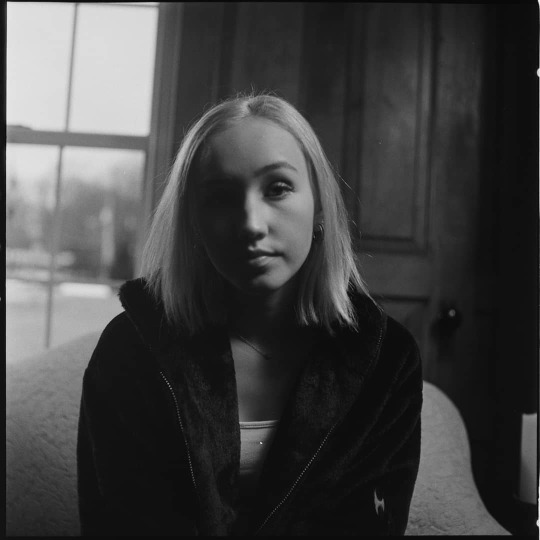
The Rolleicord IV is a TLR (twin-lens reflex camera) that was manufactured in 1954 by the Franke & Heidecke Optic company (later known simply as Rollei). It was a simplified, less-expensive version of the Rolleiflex, aimed at amateurs who wanted a high-quality camera but couldn't afford the professional version. I've said it before, but it bears repeating: there is nothing wrong with simple cameras, especially when they're from good camera companies. Simple cameras have less that can go wrong, and after nearly 70 years, simple cameras tend to just... work. ⠀⠀⠀⠀⠀⠀⠀⠀⠀ @jellyshooz gave me this version of the Rolleicord to test and inspect, which is why it was used to shoot with both Kylee and Grace. It has a few problems, mostly cosmetic, but for the most part it works well. Slower shutter speeds aren't accurate, and there's some dust and fungus in the lenses, but nothing that seems to impact normal operation. ⠀⠀⠀⠀⠀⠀⠀⠀⠀ I did have some trouble shooting with the Rolleicord, but it was just as likely to be user error as camera error. (at Wooster, Ohio) https://www.instagram.com/p/B95OBjNAUNq/?igshid=1o1au7hdyyskt
0 notes
Photo

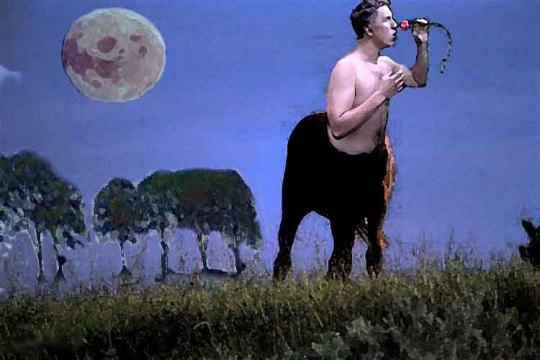
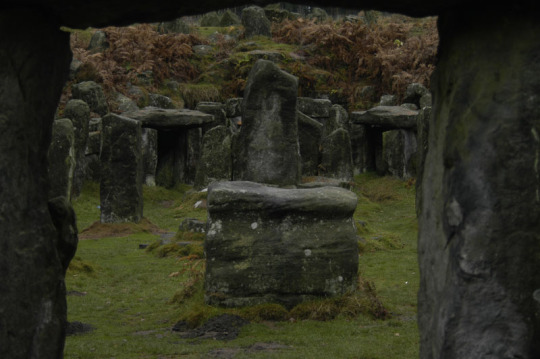



“I learned photography literally at the knee of my father, a photojournalist in WWII and Korea as well as international photography contest winner. I've been shooting and winning in photo contests since 1957.
My first camera was a Brownie box camera, but I owned and shot dozens of cameras since. I currently shoot with a 1953 Rollei 120 twin lens reflex for my film work and a Nikon D300 as my primary digital camera, but also use a Canon and underwater digitals.
I am published in books and magazines, I produce my own finished work and sell in galleries on the left coast. I'm not looking for dates or to hook up, just honest, talented models.”
I didn’t know MS Paint was still in use, but M Lance Studio seems to be carrying the torch for that legacy product. I’m not sure what the hell this guy has been doing for the now 11 years that he’s been on Model Mayhem, but it certainly isn’t anything that required talent or creativity.
What a load of shit.
https://www.modelmayhem.com/Uley1
#shit#garbage#dumb#stupid#embarrassing#model mayhem#modelmayhem#photoshoot#terrible photos#terrible photography#horrible
0 notes
Photo
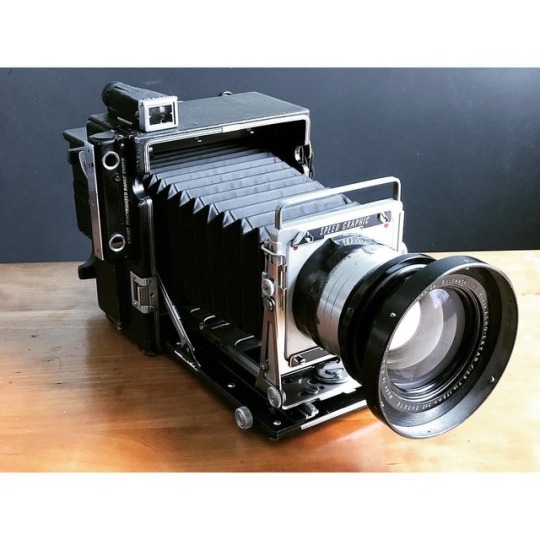
These are a few of my favorite tools. Aero Ektar lens mounted on Speed Graphic 4x5, with rangefinder: This military grade lens was made for shooting from airplanes on recon missions during World War II. It has thorium mixed into its elements, and is radioactive. Rollei twin lens reflex: I discovered this camera in a consignment shop out west. It was 1993, and I was living in a van behind my friend’s house in Boulder, working as a prep cook. I’d been shooting 35mm for years, and was hungry to switch up. A few months later I rode a camel across the Australian outback with this camera around my neck. It was the first cohesive body of work I ever made. Leica IIIc 35mm: I found this little gem at a garage sale in NE Minneapolis, at the bottom of a cardboard box full of cameras. They wanted $40 for the whole shebang. There was a Hasselblad in there as well. (thx for the tip DJ). This is my newest camera, and current favorite. It’s the same model that Robert Frank used to shoot his seminal photo book THE AMERICANS in the 1950s. Sinar P 8x10: A photographer could go their entire career without shooting an 8x10 camera; I wanted to make sure that didn’t to happen to me. The great thing about Sinar cameras is that they are interchangeable, like legos. For a smaller format, this camera breaks down into 4x5, and shoots with a digital back in place of film. IBM Selectric typewriter: When my dad shut down his machine shop, he sold off all of the equipment. Any tools that were left over, he divided between his grand children. But he saved the typewriter for me. After 50 years of sitting in a grubby, oil-infused environment, I can still smell my dad’s shop when I lift the cover and take a whiff. It’s my inheritance. And I’m not talking about the typewriter. What I mean is this: my parents sent me out into the world to become a journalist and tell stories. 30 years later, I’m doing exactly that. Thank you mom and dad for providing the tools. ____ #largeformat #analog #darkroom #shootmorefilm #mediumformat #35mm #analoguevibes #filmcamera #thefilmcommunity #heyfsc #analoguepeople #35mmsyndrome #documentary #photostory (at Minneapolis, Minnesota) https://www.instagram.com/p/BuZdT9kFOfV/?utm_source=ig_tumblr_share&igshid=12xcsk5mjvd8s
#largeformat#analog#darkroom#shootmorefilm#mediumformat#35mm#analoguevibes#filmcamera#thefilmcommunity#heyfsc#analoguepeople#35mmsyndrome#documentary#photostory
0 notes
Text
The gallery below shows a set of medium format pictures of Oxford which I found in a collection of slides I bought last week. There were a total of about 700, medium format, Agfachrome slides which had been taken over a 7 or 8 year period from the mid 1970s to the early 1980s, and this set of Oxford is just a small part of the various interesting and well taken pictures I found.
I understand from the seller on ebay, that the pictures were taken on a Rolleiflex twin lens reflex camera by a very enthusiastic photographer. Whoever they were, they certainly seem to have been prolific in their photography – the subject matter seems to be of many locations about the UK, particularly in many of the traditional walking areas in the Lake District and Scotland, and some in other parts of Europe.
Pictures of Oxford
I don’t know the city of Oxford at all, so I’ve not been able to name all the locations shown, but I’ve put names to the locations I could find in a google image search. I suspect many of the buildings shown are part of the University and I’m sure the river is the Isis.
These pictures are another example of how good the quality of medium format colour slides can be, especially when they are taken on a good quality camera. Although I don’t know for sure that a Rolleiflex was used, the pictures would suggest that if it wasn’t a Rollei, it must have been a good quality camera.
I’m also struck by how well the exposure has been judged. Colour slide film is notoriously difficult to get the exposure right on – it has a latitude (error range) of about 1/2 stop before it starts looking either dark with no shadow detail, or completely washed out. I don’t know if the camera used had a built in light meter, or if the photographer used a hand held meter, but the results they obtained were very accurate, and that applies to virtually all the other slides in the complete collection.
If you find these pictures interesting remember to visit again in a while because I’ll be adding posts featuring more sets from this collection.
Square towered building
Lily pond
Punting on the river
University buildings
University buildings
Punts on the Isis
Looking over the city
University Church
Bridge of Sighs
Bridge of Sighs
A pond in Oxford
Pictures of Oxford in 1981 The gallery below shows a set of medium format pictures of Oxford which I found in a collection of slides I bought last week.
0 notes
Text
Zeiss Otus: One other Degree of High quality
New Post has been published on https://takenews.net/zeiss-otus-one-other-degree-of-high-quality/
Zeiss Otus: One other Degree of High quality
I’ve been taking pictures utilizing Zeiss optics for many years. The appreciation was instilled in me by my grandfather who collected cameras fairly significantly, together with a big Leica assortment. He handed on just a few cameras just like the Argus C3, Zeiss Ikoflex Twin Lens Reflex, Rollei 35, and so forth. in addition to just a few massive format and enlarging lenses, usually explaining to me that Zeiss was the actual chief of optics.
He had a factor for German engineering and I perceive why. Paradoxically, he was a Lt. Colonel within the US military in WWII and accountable for many demolitions. As a hobbyist photographer, he introduced cameras with him and bought some there.
My first critical digicam for professional use (after the Sinar F1) was a Contax RTSIII. I had fallen in love with a pal’s RTS. And since I used to be taking pictures massive format I didn’t actually really feel a necessity for medium format, skipping over it for probably the most half for any actual work, and selecting what I felt was one of the best in 35mm movie from an organization that used one of the best title in medium format imagery – Zeiss.
After I lastly went to digital, the principle query was what physique may I put my Contax Zeiss lenses onto. Initially, it was Canon. Later, Sony appeared intriguing as an organization who would possibly even go full body with a brief flange distance, permitting using Leica M-mount lenses just like the Zeiss ZM line – an possibility I actually wished. Certainly, Sony delivered.
At the moment, I primarily use the Sony a7R II with a collection of Zeiss lenses together with the Otus collection. Whereas I exploit different lenses for particular seems, it’s all the time Zeiss when high quality is crucial. And in that, nothing beats the Otus. Merely put, there isn’t any lens providing the identical efficiency with a 1.four f-stop.
The story goes that Zeiss let the optical engineers have free reign to create one of the best lens with no restrictions. The outcome: the Otus line. Initially, the 55/1.four and later extra variants adopted.
The lens is massive, and the 85 and 28, very massive. They’re additionally quick, at 1.four. In addition they created a brand new customary in a few methods. They merely exceed the rest on the market. In addition they provide close to prime efficiency on the widest aperture.
In most lenses, together with among the finest and sharpest, vast open efficiency isn’t superb nor completely managed in favor of permitting extra gentle, and sometimes sufficient, merely a special look vast open that’s forgiving. The Zeiss 100/2 Makro is an instance the place there are certainly chromatic aberrations splitting colours at f2 permitting ensuing purple and inexperienced fringing (simply mitigated in software program right this moment). Closed down these shortly disappear yielding a superbly tight and managed picture.
The Otus lenses are tight, and apochromatic throughout the vary permitting one to shoot good photographs vast open with out worry for lack of perfection. The one query turns into the mastery over depth of discipline, alignment and what primarily comes all the way down to the understanding of photographic rules and self-discipline in making use of them. That is fairly distinctive in permitting for stunning depth of discipline and isolation of topic in a picture but nonetheless yielding a pointy, contrasty picture freed from imperfections of the glass.
This additionally permits for extra dramatic depth of discipline or bigger format equivalence – a picture that in any other case may solely be shot on medium format or massive format to get the identical look and impact of topic vs background. However I stress, that like taking pictures actual medium format particularly 6×6, 6X9 and enormous format, taking pictures imperfections are amplified exponentially.
I really like the qualities of assorted lenses, and see each as a paintbrush of kinds that permit for various seems. Every an possibility with a really totally different consequence on particular topics. Some lenses are superb for portraiture, however not for everybody – as topic or photographer, nor for each lighting scenario.
The Zeiss Milvus 100/2 Makro is an incredible lens and provides unimaginable particulars and micro distinction, but in harsher lighting and on pores and skin that isn’t porcelain easy, it may be too “bitingly sharp” for portraiture in a means that many would discover unappealing for their very own picture. For a male with salt and pepper options, it’s a incredible software for that gruffness. The Otus 55 could have extra element, and but extra subtly utilized. It may reveal particulars with a microscopic stage of knowledge exceeding what the attention can see whereas nonetheless remaining pleasing.
The resolving energy and sharpness with a high-resolution digicam yield one other stage of element that interprets into extra particulars in shadows and highlights fairly than a muddy contrasty simplification of sunshine and darkish areas. That is additionally boosted by flare management that mitigates flare and lightweight bounce even in direct gentle. Magic. By no means seen such functionality.
I really feel it’s akin to the next dynamic vary finally due to better data in particulars and thus easy tonal transitions throughout a tonal vary. I’m not an optical engineer or skilled besides in what I see. I can’t say I do know with scientific certainty that the optics can really have an effect on dynamic vary and that that is supported by numbers or assessments. However I do see the ends in my photographs. This high quality jogs my memory of four×5 transparencies even when not fairly that. Very merely it exceeds something I’ve ever seen.
When it comes to medium format in digital, I do really feel from my very own assessments that the Otus lenses are no less than on par, or exceed the present choices out there. We stay in superb occasions by way of digicam expertise. So many nice methods, and plenty of nice lenses. Arduous to knock any of them, particularly top-tier corporations. However, the Otus is an apparent selection for me and permits me to get what I really feel is medium format high quality on a full body sensor that has sufficient decision.
At one level, I in contrast 2 prime medium format choices with their higher and equal lenses in opposition to the Otus 55 on my Sony a7R II. I didn’t discover any single benefit of the methods that value at minimal Three occasions as a lot. As a substitute, I’d be taking a look at critical compromises at a far greater worth, and all of the extra so for any extra lens and peripheral purchases.
However all that apart, only one digicam and one lens, I discovered the above mixture one thing extraordinarily highly effective at an inexpensive value that completely holds its personal in opposition to present medium format cameras at 50MP. I can’t but converse for the 100MP sensor, nor the brand new 400MP functionality. I can solely say I might like to see how the Otus lenses fare on them.
The silver lining of utilizing “full body” vs “medium format” is ease of use, normal usability in any state of affairs, and much fewer restrictions and compromises related to them, whether or not better lighting, velocity, weight and even fundamental but important means to carry the digicam regular. Add to that lenses.
For photographers that love lenses, it’s superb after we can take our superb lenses with us, whether or not old style or the most recent and biggest. With Zeiss and others, popping out with superb new ranges of superiority at a speedy tempo of growth it’s extra than simply good to permit for his or her use. The lenses can usually outline our work.
This doesn’t imply that the lenses of the opposite corporations aren’t any good or missing in relation to private selection, solely that no matter perfection or not, utilizing my lenses, entry to older ones and new pinnacles of accomplishment is kind of an asset and easily not attainable with most methods. I do love the Hasselblad XD1 for ergonomics, and ease of use, as that type is kind of distinctive certainly if not outright one of the best appear and feel of any digicam on the market. If I may solely put my Otus on it… Why?
Primarily, for the entire causes above. I additionally consider the Otus would give a special look. However the actual headline factors are 1.four, true Apochromatic, distinctive resolving energy and guide focus. These separate out the lenses being produced by different medium format producers. For me, at 1.four, most AF methods can’t be totally trusted and I see this usually. Most AF methods have a neater process at 1.four on one hand, but have a tough nailing precisely what you need at such a shallow DOF and razor skinny airplane of focus. Merely put, it’s a system that invitations challenges as a result of better complexity, very like the now pointless mirror mechanism in SLR methods.
That added complexity invitations extra failures. AF methods require calibration exceeding what most are prepared to even take time to know, nor does the AF know precisely which level in three-dimensional house you need. I do know after I shoot MF, not solely is the “really feel” there that I like however so is the accuracy, as long as I’m disciplined in my taking pictures.
For instance, the attention. Sony has a beautiful eye focus characteristic that makes a lot sense. And I hear it really works amazingly for a lot of. From a distance, that’s most likely good. For me, the attention alone isn’t sufficient precision. The attention is three dimensional. I just lately discovered I had inadvertently centered on the outer portion of the attention, the cornea – like specializing in the outer glass, however not the iris, the place the attractive patterns and colours are. It’s the iris that I’m after, the flat airplane of the attention that we most frequently take into account as the actual data of the attention, in addition to stunning distinctive art work of patterns and colours.
The iris not solely reads data and transfers but in addition provides us data, uniquely to science and ranging traditions from cultures world wide. A bit humorously, and particularly with this stage of functionality in particulars, it additionally usually displays and reveals what is going on within the scene in entrance of the topic, like a mirror.
This shall be controversial — as if the prior opinions weren’t sufficient. Backside line, I’ve been capable of upscale – or uprez – fairly a bit when utilizing the Otus lenses. Going to 50MP from the native 42.2MP within the Sony is actually not an enormous deal and sometimes with zero means to discern any variations. When strobes and good lighting are used, together with the Otus and Sony sensor, I’ve discovered pushing as much as 100MP nonetheless yields particulars that almost all can’t inform aside from native photographs when cropped and supplied to professionals to with out accompanying particulars on what was completed. I’ve even gone as excessive as 200MP in some photographs, with the understanding they’d be printed very massive and minimal viewing distance is greater than 2-Three ft.
As it’s, I have a look at faces and portraiture akin to taking pictures landscapes. Portraiture is like taking pictures psychological forensic landscapes of humanity. The number of options, the rolling surfaces, complexities of particulars, every a part of the interface with the world, but beneath a whole world of knowledge, connections, methods in concord, and but additionally at conflict, and the thoughts together with private histories which might be finally inscribed. Portraiture opens that up and captures these intimate particulars that for some are telling, and but as if hidden.
Portraiture is a deep stage of intimacy and figuring out, sharing the inside – the inside pains, struggles, successes, ease, consumption, positioning, blessings, curses, illness, and dis-ease. A lot data. I’ll stress that it may be an excessive amount of, however that’s a method and storytelling query for the photographer and the way they want to symbolize topics. However, it’s sincere data, not overly sharp or aggressively detailed in a means that’s harsher than any actuality. However it actually affords extra data than seen to the human eye. I all the time see greater than what I noticed after I shot photographs. All the time. For higher, or worse.
However, it’s all in how we shoot and inform that story by way of the seize of that epic and distinctive panorama and the alternatives of storytelling brushes and instruments. For me, onerous to beat the Otus 55/1.four That high quality, that aperture/velocity, actually apochromatic, unimaginable resolving energy and smoothness of tonal gradations, particulars in shadows and highlights — I do know of no different lens or lens traces that meet this.
It’s vital to know with nice energy comes nice accountability. Right here, that could be a good analogy to: with nice decision comes nice accountability in taking pictures self-discipline to be able to mitigate errors that received’t even be a problem with lesser decision and resolving energy. Identical to printing bigger (for people who have), taking pictures bigger amplifies errors exponentially, together with people who wouldn’t be related at decrease resolutions with lenses much less succesful.
Not nailing give attention to smaller sensors, particularly any sensor 24MP and beneath, isn’t usually seen significantly when merely shared on the Web, particularly Facebook which additionally downgrades the picture, and all of the extra so with Instagram, as a result of the pictures are tiny. Ever surprise why many digicam corporations have stopped at 24MP? As a result of we don’t want greater than that for 97% of the taking pictures on the market for supposed finish outcomes, and since extra begins to generate points exponentially. Higher and costlier lenses are just one small a part of that.
Taking pictures so sharply with a large decision and hair-thin shallow depth of discipline requires large accuracy and steadiness of photographer and topic, a better understanding of planes in house and three-dimensional considering, better persistence in taking pictures and with topics and folks abilities to instill confidence and persistence in your topics. It’s a talent, that mixes many abilities for the devoted. However, first, it’s an understanding. It’s an method and methodology requiring persistence and construction – very like taking pictures massive format.
Snapping off pictures isn’t adequate. I see many shooters with quick lenses to point out off however all the time shoot closed all the way down to play it protected, which defeats the aim of such lenses. Actually, if you’re taking pictures at 5.6 or so, a slower lens is way extra economical and, in some circumstances, superior. They’re actually simpler to fabricate and thus provide cheap prices. The lens lineups for a lot of corporations will reveal this clearly. You’ll discover you may’t get a 1.four in any medium format lens. And ultra-fast lenses wider and quicker than 1.four are extraordinarily uncommon and costly until they’re for a smaller sensor at much less decision.
Taking pictures merely no matter will probably not yield any spectacular outcomes. But, like taking pictures massive format, correct consideration, creativity and stable taking pictures of even probably the most mundane will be elevated to the extent of artwork, or imagery that’s distinctive and compelling counting on the imaginative and prescient and expertise that introduced that imaginative and prescient to fruition.
For sure work a tripod is important. For residing respiratory topics strobes actually assist, particularly if the topic is simply ft away and one is attempting to seize the iris alone at 1.four. It’s exceedingly troublesome; to nail give attention to the iris, to align each eyes, to be regular together with respiratory which causes minor swaying and limb actions, to make sure the topic can also be nonetheless or sway congruently, and so forth. Errors in most methods can be swallowed by the decrease decision and so forth, whereas with the Otus, all of it reveals, the nice, the dangerous, the microscopic.
It usually strikes me that I’m utilizing one thing extra like army grade scientific tools that’s almost inappropriate and unlawful for civilian use. After I’m out using the Otus acts as like a robust telescope to particulars far far-off, whether or not the floor of the moon or who’s within the restaurant blocks away. Spy companies, this can be the software for you.
It’s certainly overkill for many conditions. However when becoming, wow, and definitively superior. One other stage.
For weddings, it has large versatility.It has a gentle, basic search for the event with a print promoting worthy crisp sharpness that may be utilized in a razor-thin flat airplane, together with a spotlight fall off that’s dramatic, but painterly good in its delicate softness. It actually excels in formal portraits of households the place that high quality issues, in addition to bride and groom portraits the place that versatility and ranging nature relying upon aperture, lighting, and so forth. help in dictating that last general look.
At one wedding ceremony I shot, I did so discretely with the ambient gentle of the room whereas the daddy of the groom shot them with strobes on a DSLR, since he, too, was a photographer. The Otus photographs regarded far sharper and general cleaner regardless of pretty low gentle, in a means that regarded extra like massive gentle field and clear low ISO regardless of the excessive ISO needed. I’m nonetheless amazed. I’ve different lenses and know the distinction is the lens right here, not particularly the sensor or later software program. It’s the qualities of the lens itself, but in addition that 1.four, in comparison with any greater aperture, that actually provides an extra edge.
The Otus lenses are usually not low-cost. But, they’re finally not very costly. In comparison with Leica, they’re usually lower than half the worth of any higher lens of their household. Keep in mind Leica remains to be at 24MP and thus don’t require perfection past that. That doesn’t imply they aren’t succesful. The Leica 50mm/f2 Summicron APO is commonly the comparability and, little doubt, an distinctive fine quality lens. Leica doesn’t, nonetheless, make an Apochromatic 50mm/1.four. Their 50/2 APO is sort of Three occasions the worth. The Sigma Artwork 50/1.four simply isn’t the identical stage as many have proven, whether or not in corrections, picture high quality, or manufacturing and really feel. However, it’s nonetheless a superb lens and is identical class of almost prime efficiency at full aperture, a feat certainly. And a really worthy high-quality lens exceeding most.
As soon as we get into medium format, once more, there isn’t any good comparability, however many lenses at related value for something with far slower apertures – whether or not Leica, Hasselblad, Fuji or Pentax. And their our bodies retailing for minimal 2-Three occasions the present prime Sony A7R3 which may output 42.2MP natively, or simply uprez to 50MP comparatively, but with many benefits fairly than compromises. BIT depth is actually the one critical benefit in medium format. I may also concede that it could’t actually be knocked when one desires a bigger digicam with a bigger sensor with autofocus and a willingness to make compromises. Nevertheless, there are lots of benefits to the Sony, Nikon, or Canon full body (24×36) format with Otus lenses, yielding comparable outcomes to medium format high quality (and at occasions exceeding it) when taking all into consideration on actual jobs and the power to actually expertly use that wider aperture, together with in decrease gentle.
At that finish, the Otus lenses are a cut price, an amazing worth for what they provide – in of themselves, and with a correct physique and sensor able to utilizing all that resolving energy. But, in a package deal that may be taken almost wherever, a lens that may be introduced out at any time to realize one other stage of high quality, exceeding what is feasible with almost the rest, if used properly.
APO, or Apochromatic: this refers to lens designs that primarily management the alignment of shade rays. In an apochromatic lens, they converge and give attention to the identical airplane yielding better sharpness and correct shade. In brief, an APO lens focuses the colours on the identical airplane. To most, the plain query then is: you imply most lenses don’t give attention to the identical airplane?! That’s proper.
To fabricate lenses of this stage of exactness could be very costly and most not prepared to pay for such a luxurious that looks as if a normal necessity. Nevertheless, when lenses are closed down that is mitigated anyway. That additionally means to fabricate a lens that’s apochromatic vast open, and with a most f-stop of 1.four is past what anybody has ever completed – if I perceive appropriately. The Otus 55/1.four has turn into absolutely the benchmark. Beforehand, that benchmark customary of good correction belonged to the Coastal Optics 60/four lens. That lens isn’t shabby in any means, nonetheless, perfection can also be far simpler to realize at f4 and down.
Additionally vital: like “all pure” within the meals business. There is no such thing as a governing physique that controls the definition thus anybody can say it. Or like with “natural” the place the FDA permits a number of artificial substances for use when corporations declare their merchandise to be “natural”. Apochromatic ought to imply, and does to corporations with honor, that the crimson, inexperienced and blue rays of sunshine (or all) that the sensors see are certainly centered on the movie/sensor airplane. Nevertheless, many corporations make such claims with out integrity or honesty as a result of they don’t really meet the specs of apochromatic and as a substitute have solely 2 of three, or just 1 with the others shut sufficient. Within the digital age, sensors amplify the problem and are delicate to fringing. And high-resolution sensors amplify it exponentially, as they do any error.
That is why in an Otus lens you see correct and unimaginable (incomparable) sharpness even when vast open.
In regards to the creator: David Zimand is knowledgeable photographer of over 25 years primarily based within the New York Metropolis space. The opinions expressed on this article are solely these of the creator. Zimand has shot for purchasers that embody Deloitte, Amazon, Ford Fashions, and Trump Fashions. His work has additionally appeared in publications reminiscent of Vogue, Elle, Cosmopolitan, Every day Mail, and extra. You will discover extra of his work on his web site, Facebook, and Instagram. This text was additionally revealed right here.
0 notes
Photo

1950s ROLLEICORD Twin Lens REFLEX CAMERA by ROLLEI w CASE http://rover.ebay.com/rover/1/711-53200-19255-0/1?ff3=2&toolid=10044&campid=5337410320&customid=&lgeo=1&vectorid=229466&item=311881337682
0 notes
Text
1950s ROLLEICORD Twin Lens REFLEX CAMERA by ROLLEI w CASE - Full read by eBay
Price 69.0 USD (45 Bids) End Time: 2017-06-02 00:18:44 PDT Bid Now | Add to watch list http://ebay.to/2qDrfCK
0 notes